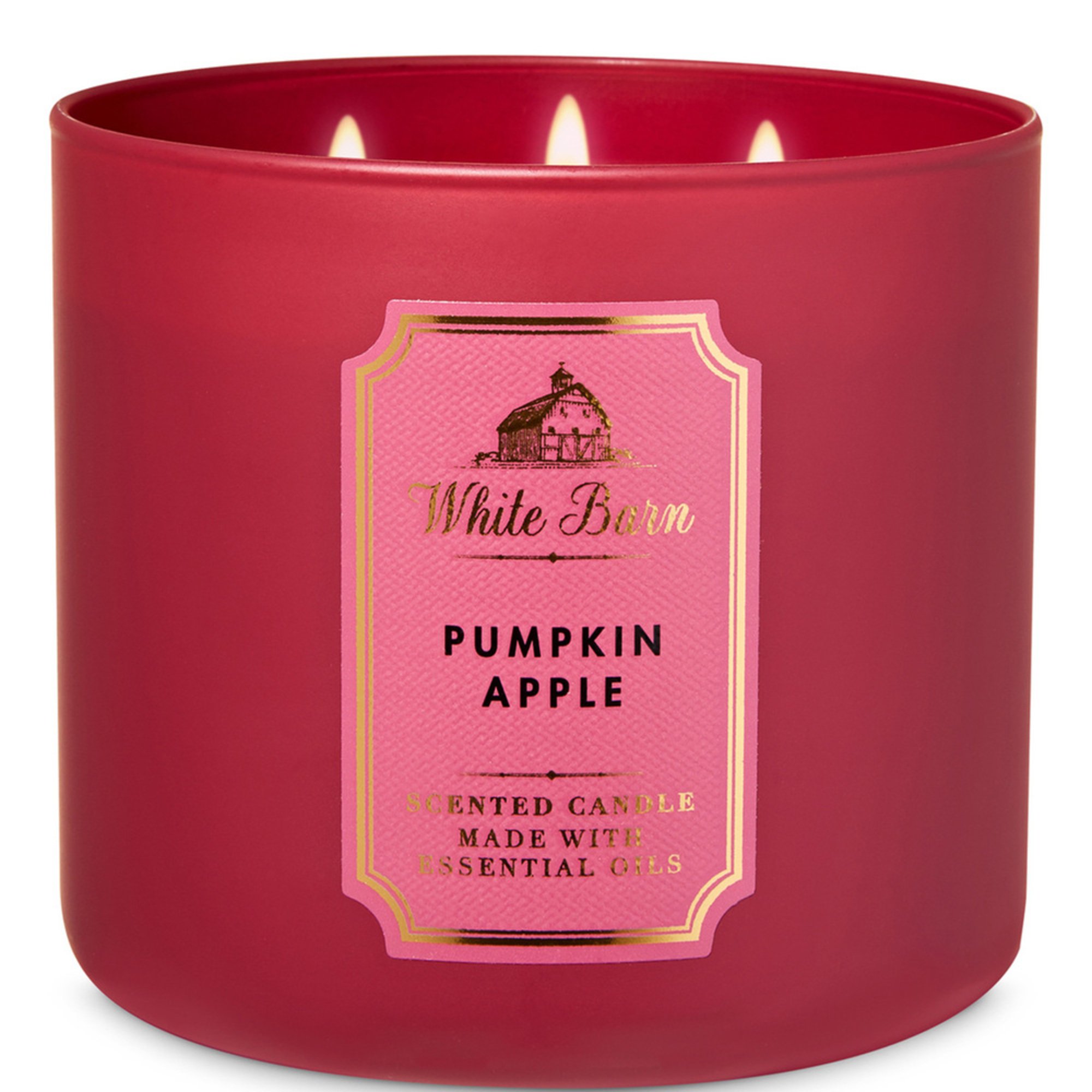

Articles
How Much Can You Make Selling Candles
Modified: October 20, 2024
Discover how much money you can earn by selling candles with our informative articles. Learn tips, tricks, and strategies to maximize your profits.
(Many of the links in this article redirect to a specific reviewed product. Your purchase of these products through affiliate links helps to generate commission for Storables.com, at no extra cost. Learn more)
Introduction
When it comes to starting a side hustle or small business, selling candles is a popular choice for many aspiring entrepreneurs. Not only are candles a versatile and decorative item, but they also bring a sense of relaxation and ambiance to any space. Whether you’re a creative individual looking to turn your passion for candle-making into a profitable venture or simply seeking a way to make some extra income, selling candles can be a rewarding and lucrative endeavor.
In this article, we will explore the ins and outs of selling candles and provide valuable insights into how much you can make in this business. From the benefits of selling candles to the types of candles to consider, pricing strategies, marketing tactics, and real-life success stories, we will cover everything you need to know to start your candle-selling journey.
One of the most appealing aspects of selling candles is the flexibility it offers. Whether you choose to sell candles online, at local craft fairs, through social media platforms, or even in brick-and-mortar stores, the opportunities for reaching potential customers are vast. This flexibility also allows you to work at your own pace, making it an ideal side hustle for those with other commitments.
In addition to the flexibility, selling candles can be a profitable venture. While the exact earnings can vary depending on factors such as the size of your business, the demand for your products, and your marketing efforts, some candle sellers have seen significant success. By implementing effective marketing strategies, sourcing high-quality materials, and offering unique candle designs, you can generate a steady income from your candle business.
However, it is important to note that selling candles also comes with its own set of challenges. From sourcing the right materials to staying competitive in a saturated market, there are various factors to consider to ensure your candle business thrives. In this article, we will provide you with the knowledge and tools to navigate these challenges and set yourself up for success.
So, if you’re ready to ignite your entrepreneurial spirit and embark on a candle-selling adventure, let’s dive deeper into the world of selling candles and explore the potential opportunities and earnings that await you.
Key Takeaways:
- Selling candles offers a flexible, low-cost startup with high demand and creative freedom. It’s a rewarding venture that can lead to a steady income and personal fulfillment.
- To succeed in the candle business, focus on quality, storytelling, and building a loyal customer base. Embrace innovation, effective marketing, and continual learning for long-term success.
Read more: How Much To Sell Candles For
Benefits of Selling Candles
Selling candles offers numerous benefits that make it an attractive business opportunity. Here are some key advantages:
- High demand: Candles are not a seasonal product but rather in demand all year round. From creating a cozy atmosphere to adding a touch of elegance, candles are sought after for various occasions.
- Flexible and low-cost startup: Starting a candle business doesn’t require a significant investment. With minimal equipment and materials needed, you can get started relatively quickly and affordably.
- Creative outlet: Candle making allows you to tap into your creativity and create unique designs. You can experiment with different fragrances, colors, and shapes to offer a wide range of options to customers.
- Home-based business: Selling candles can easily be done from the comfort of your own home. This eliminates the need for a physical storefront and allows you to save on overhead costs.
- Recurring customer base: Once customers experience the joy of your candles, they are likely to become repeat buyers. Building a loyal customer base creates a steady stream of revenue for your business.
- Expandable product line: While starting with candles, you can expand your product line to include complementary items such as candle holders, wax melts, or even essential oils. This diversification can help attract a broader customer base.
- Personal fulfillment: Few things compare to the satisfaction of seeing your creations bring joy and relaxation to others. Selling candles allows you to share your passion with customers and make a positive impact on their lives.
These benefits make selling candles an enticing business opportunity for both seasoned entrepreneurs and those exploring their first venture. The combination of high demand, low startup costs, and creative freedom sets the stage for a potentially successful and fulfilling business endeavor.
Types of Candles to Sell
When it comes to selling candles, there is a wide array of options to choose from. Different types of candles cater to varying preferences and occasions. Here are some popular types of candles to consider:
- Container Candles: These candles are poured into containers, such as glass jars or tins, and are one of the most common types available. They are versatile and can be made with different waxes, colors, and scents to suit various preferences.
- Pillar Candles: Pillar candles are freestanding and come in different heights and diameters. They are long-lasting and often used for decorative purposes, making them a favorite choice for weddings and home décor.
- Taper Candles: Taper candles are slender and come in various lengths. They are commonly used for special occasions, such as formal dinners or religious ceremonies, and are often placed in candle holders.
- Votive Candles: Votive candles are small, often cylindrical in shape, and are usually placed in votive holders. They are popular for creating an inviting ambiance and can be scented or unscented.
- Tea Light Candles: Tea light candles are small, shallow candles that come in metal or plastic containers. They are ideal for accent lighting and can be used in decorative holders or floating arrangements.
- Beeswax Candles: Beeswax candles are made from natural beeswax, giving them a beautiful natural aroma. They are known for their clean burn and are popular among eco-conscious consumers.
- Soy Candles: Soy candles are made from soybean oil and are a popular choice for eco-friendly consumers. They burn cleanly and can be scented or unscented.
- Decorative Candles: Decorative candles come in various shapes, sizes, and designs. These candles often feature intricate patterns, bold colors, or unique shapes, making them eye-catching and perfect for gifting.
When deciding which types of candles to sell, consider your target market and their preferences. It can be beneficial to offer a variety of candle types to cater to different occasions and customer preferences. Additionally, offering custom-made or personalized candles can be an effective way to stand out in the market and attract customers seeking unique and thoughtful gifts.
Don’t limit yourself to just one type of candle; experiment, be creative, and explore different candle-making techniques to expand your product line and attract a wider customer base.
Pricing Your Candles
Setting the right price for your candles is crucial for the success of your business. While determining the perfect price can be a balancing act, considering factors such as production costs, market demand, and perceived value is essential. Here are some key considerations when pricing your candles:
- Calculate your production costs: Start by determining the cost of materials, such as wax, wicks, fragrance oils, and containers, as well as any additional expenses like packaging and labeling. Factor in the time it takes to create each candle, including the pouring, cooling, and finishing process.
- Research the market: Do some market research to gain insights into the prices of candles similar to yours. Visit local stores, online platforms, and craft fairs to see how competing candle sellers are pricing their products. Take note of the quality, size, and packaging of their candles to make a fair comparison.
- Consider your target audience: Understand the purchasing power and preferences of your target market. Are they price-sensitive or more focused on quality and uniqueness? Adjust your pricing accordingly to align with the perceived value your candles offer to your customers.
- Account for overhead expenses: In addition to production costs, consider other overhead expenses such as marketing, website fees, and packaging materials. These costs need to be factored into your pricing to ensure you cover all your expenses and make a profit.
- Differentiate pricing for different candle types: Consider adjusting your prices based on the type of candle and the effort involved in creating it. For example, a larger pillar candle may require more materials and time, warranting a higher price compared to a smaller votive candle.
- Bundling and discounts: Consider offering bundle deals or discounts for customers who purchase multiple candles. This can incentivize customers to buy more and help increase your overall sales.
- Continuously assess and adjust: Keep an eye on your pricing strategy and regularly reassess whether it aligns with the market and your business goals. Monitor customer feedback and sales data to make informed decisions about price adjustments if necessary.
Remember, finding the right price point may require some trial and error. It’s essential to strike a balance between profitability and competitiveness in the market. Keep in mind that as your business grows, you may have the opportunity to negotiate better prices from suppliers, leading to potential cost savings that can be passed on to your customers without compromising your bottom line.
A successful pricing strategy takes into account both the value you provide to your customers and the sustainability of your business. By carefully considering these factors and regularly evaluating your pricing strategy, you can ensure that your candles are priced competitively and generate a profitable return for your efforts.
When selling candles, consider the cost of materials, time spent making them, and the market demand. Research pricing strategies and target your ideal customer to maximize profits.
Marketing and Selling Strategies
Effective marketing and selling strategies play a crucial role in the success of your candle business. To maximize your reach and attract customers, consider implementing the following strategies:
- Build an online presence: Create a professional website or online store to showcase your candles. Utilize social media platforms like Instagram, Facebook, and Pinterest to promote your products, share captivating visuals, and engage with potential customers. Consider investing in search engine optimization (SEO) techniques to improve your online visibility.
- Utilize the power of storytelling: Share the story behind your candles, including their inspiration, the quality ingredients used, and the benefits they provide. Connect with your customers on an emotional level by communicating the positive experiences and ambiance your candles bring.
- Collaborate with influencers and bloggers: Partner up with influencers and bloggers in the home décor and lifestyle niche. Collaborate on content, giveaways, or reviews to leverage their audience and increase brand awareness.
- Offer samples or trial sizes: Providing samples or trial sizes of your candles can give potential customers a chance to experience the quality and fragrance firsthand. This can entice them to purchase larger sizes or become repeat buyers.
- Attend craft fairs and markets: Participate in local craft fairs, markets, or trade shows to showcase your candles to a targeted audience. These events provide an opportunity to engage directly with customers, receive feedback, and build brand loyalty.
- Create unique packaging and branding: Invest in eye-catching and professional packaging that aligns with your brand identity. Consider using custom labels or logo stickers to enhance the perceived value of your candles and make them stand out from the competition.
- Offer personalized or custom-made candles: Stand out from the crowd by offering personalized candles for special occasions like weddings, birthdays, or anniversaries. Consider taking custom orders to cater to unique customer preferences.
- Collect and showcase customer reviews: Encourage satisfied customers to leave reviews on your website or social media profiles. Positive reviews and testimonials build trust and credibility, helping potential customers feel confident in their purchasing decision.
- Implement loyalty programs and referral incentives: Reward your loyal customers with a loyalty program that offers exclusive discounts or incentives for repeat purchases. Encourage word-of-mouth marketing by offering referral incentives to customers who refer your candles to their friends and family.
Remember, consistency is key when it comes to marketing and selling your candles. Stay active on social media, regularly update your website with new content or product launches, and interact with your audience to build relationships and foster brand loyalty.
By implementing these marketing and selling strategies, you can increase brand visibility, attract a loyal customer base, and ultimately, drive sales for your candle business.
Read more: What Can You Make With A 3D Printer To Sell
Expenses and Cost Analysis
Running a candle business requires careful financial management and an understanding of the various expenses involved. To ensure profitability, it’s crucial to conduct a thorough cost analysis. Here are some common expenses to consider:
- Raw materials: This includes the cost of wax, wicks, fragrances, dyes, containers, and other materials used to make your candles.
- Packaging and labeling: The cost of packaging materials, such as boxes, bags, labels, and inserts, should be factored in. Customized packaging and branding may come at a higher cost.
- Equipment and tools: Calculate the initial investment and ongoing maintenance costs for equipment like candle melters, thermometers, pouring pitchers, and molds.
- Marketing and advertising: Budget for social media ads, website development, print materials, influencer collaborations, and other promotional activities to create awareness and attract customers.
- Shipping and fulfillment: If you’re selling online, calculate the cost of packaging materials, shipping fees, and fulfillment services. Consider offering free shipping or flat-rate shipping to attract customers.
- Overhead expenses: Account for recurring costs like utilities, website hosting fees, software subscriptions, office supplies, and insurance.
- Labor costs: If you have employees or hire help, include their wages, benefits, and payroll taxes in your cost analysis. If you’re a solo entrepreneur, consider your time and expertise as part of your labor costs.
- Insurance and legal fees: Depending on your location and the scale of your business, budget for liability insurance and consult with a legal professional for any necessary permits, licenses, or trademark registrations.
- Professional services: If you require accounting services or consultation from business experts, include these costs in your analysis.
Once you have determined these expenses, you can calculate your break-even point and set pricing strategies accordingly. Consider the volume of candles you need to sell to cover all your costs and start earning a profit. This analysis will also help you make informed decisions about whether to scale your business or invest in new equipment and marketing initiatives.
Regularly track your expenses and monitor your financial performance. Compare your actual costs with your projected budget periodically to identify areas that may require adjustments. Over time, as your business grows and scales, aim to increase efficiency and reduce costs by sourcing materials at a lower price, streamlining operations, and leveraging economies of scale.
A thorough expenses and cost analysis will provide you with valuable insights into your candle business’s financial health and profitability. By carefully managing your expenses, you can set your business up for long-term success and growth.
Insights from Successful Candle Sellers
Learning from those who have already found success in the candle selling business can provide valuable insights and guidance for aspiring entrepreneurs. Here are some key lessons from successful candle sellers:
- Focus on quality: Successful candle sellers prioritize the quality of their products. Using high-quality ingredients, investing in proper testing and research, and continually improving their craft sets them apart from the competition.
- Develop a unique value proposition: Finding a unique selling point is essential in a saturated market. Successful candle sellers differentiate themselves by offering distinctive scents, elegant packaging, personalized touches, or eco-friendly options.
- Build a loyal customer base: Nurturing a strong relationship with customers is key. Successful sellers prioritize customer satisfaction, engage with their audience through social media, respond to inquiries promptly, and offer exceptional customer service.
- Experiment with various sales channels: Successful candle sellers diversify their sales channels to reach a wider customer base. They may combine online sales through their website or online marketplaces with in-person sales at craft fairs, pop-up shops, or partnering with local retailers.
- Harness the power of storytelling: Successful sellers understand the impact of storytelling in connecting with customers. They craft compelling narratives around their brand, sharing the inspiration behind their candles and the emotions their products evoke.
- Continual learning and improvement: Successful sellers embrace a growth mindset and are always open to learning new techniques, staying updated with market trends, and seeking opportunities to enhance their candle-making skills.
- Effective branding and packaging: Successful sellers invest in appealing branding and packaging that aligns with their target market. They understand the importance of creating a memorable and cohesive brand image that resonates with customers.
- Collaborate and network: Successful sellers collaborate with complementary businesses, influencers, and fellow candle sellers. Networking and building relationships within the industry can lead to cross-promotion opportunities, new customer referrals, and valuable insights.
- Adaptability and innovation: Successful sellers understand the importance of adapting to changing market dynamics and consumer preferences. They continuously innovate by introducing new scent combinations, exploring unique candle designs, and staying ahead of emerging trends.
- Effective time and resource management: Successful sellers optimize their time and resources by implementing efficient production processes, streamlining operations, and utilizing tools and technology to automate tasks.
By learning from these insights and incorporating them into your own candle selling journey, you can increase your chances of success and build a thriving business. Remember, it takes dedication, passion, and perseverance to achieve your goals, but with the right strategies and a commitment to continuous improvement, you can create a profitable candle business that brings joy and relaxation to customers.
Conclusion
Selling candles can be a fulfilling and profitable business venture for those with a passion for creativity and entrepreneurship. The benefits of selling candles are numerous, including high demand, flexible startup options, and the opportunity to tap into your artistic side. As you embark on your candle-selling journey, keep in mind the importance of quality, differentiation, and building a loyal customer base.
By offering a variety of candle types, pricing your products strategically, implementing effective marketing and selling strategies, and managing your expenses, you can set yourself up for success. Learn from the insights of successful candle sellers, adapt to market trends, and continually seek ways to innovate and improve your craft.
Remember, building a candle business takes time, effort, and perseverance. Stay committed to providing value to your customers, honing your skills, and creating a memorable brand experience. Embrace the power of storytelling, engage with your audience, and always strive for exceptional customer service. By doing so, you can create a loyal customer base and establish a strong presence in the candle market.
As you navigate the challenges and joys of selling candles, remember that running a successful business requires adaptability and continuous learning. Stay open to feedback, adjust your strategies when necessary, and never stop exploring new opportunities for growth.
So, ignite your entrepreneurial spirit, let your creativity shine, and embark on your candle-selling journey with passion and determination. With the right mindset, dedication, and a commitment to excellence, your candle business has the potential to bring comfort, joy, and success to both you and your customers.
Frequently Asked Questions about How Much Can You Make Selling Candles
Was this page helpful?
At Storables.com, we guarantee accurate and reliable information. Our content, validated by Expert Board Contributors, is crafted following stringent Editorial Policies. We're committed to providing you with well-researched, expert-backed insights for all your informational needs.















0 thoughts on “How Much Can You Make Selling Candles”